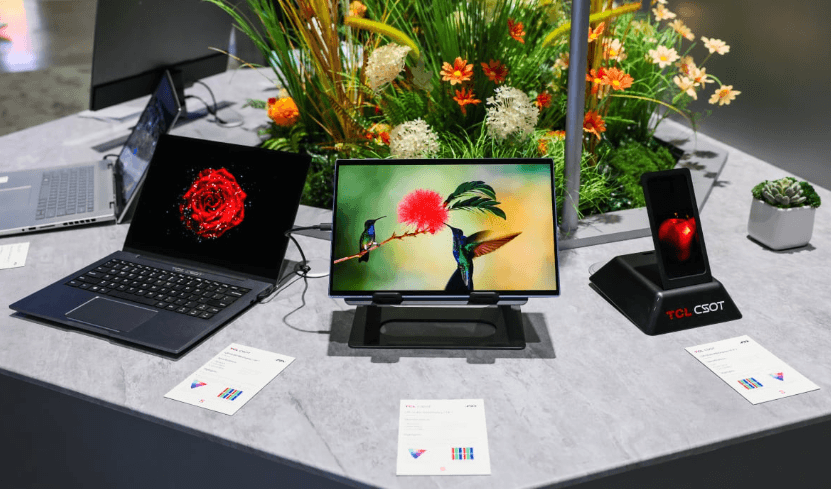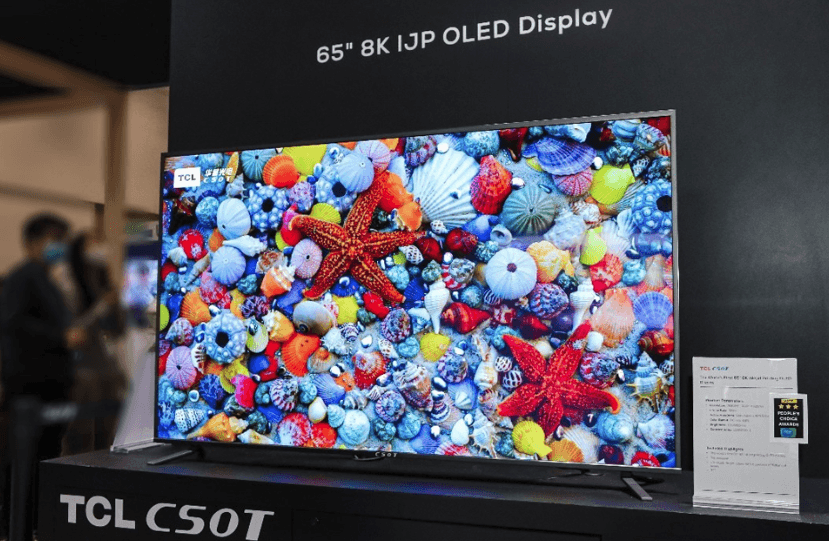
TCL CSOT, the display-making arm of TCL Electronics, is closing in on its South Korean rivals in the OLED market after showcasing a full-range of inkjet-printed panels for every kind of device.
Company executives were out in full force at this week’s SID Display Week, one of the most prestigious annual events in the industry, where they claimed a number of technological breakthroughs and innovations.
Its full lineup of inkjet-printed OLED panes covers everything from televisions to smartphones and laptops, and will likely increase the pressure on rivals such as LG Display and Samsung Display, which once owned the OLED market for themselves.
From our perspective here at HDTVTest, the most interesting panel on show at SID was TCL CSOT’s 65-inch OLED display for televisions. Until today, the OLED TV market has belonged entirely to LG Display, which manufacturers WOLED panels, and Samsung Display with its QD-OLED panels, and they’ll likely be getting worried over the prospects of TCL muscling in on that business.
However, TCL CSOT’s inkjet-printed OLED TVs probably aren’t likely to hit the shops anytime soon. Although the 65-inch display was on show, the company didn’t talk specifics, with no details regarding its brightness, refresh rates or anything else.
The company had much more to say about its 6.5-inch OLED panel for smartphones, saying it’s based on a “true RGB sub-pixel layout”, with 326 pixels per inch, roughly equivalent to 460 PPI in Pentile. It said the panel covers 99% of the DCI-P3 colour gamut, with “true blacks” and a blazing-fast response time of less than 0.1 milliseconds.
There were plenty of mid-sized OLED panels on show, too. In fact, it revealed two 14-inch panels aimed at tablets and notebooks, with one featuring Full HD resolution of 1920x1200 pixels, and the other being 2.8K resolution. In both cases, they feature true RGB pixels. The company added that the 1920x1200 pixel notebook display is also the first printed OLED display in the world to make use of an oxide backplane, which has the effect of improving its response times and reducing power consumption.

In addition, there was a 27-inch 4K inkjet-printed OLED panel on show featuring a 120Hz refresh rate, designed for use in PC monitors, the company said. It had earlier shown off the same panel at CES 2025, so it’s not entirely new, but the reappearance suggests that the company is getting closer to being able to commercialize it. However, there was no word on when that might happen.
For now, TCL CSOT is still little more than a pretender in the OLED display market, while retaining its status as one of the world’s leaders in LCD panel production. It sells LCD panels to major brands including LG Electronics, Samsung Electronics and Sony, as well as its parent company TCL. In recent years it has grown its LCD business considerably, as the Korean display makers have both exited that market to focus on OLED.
But after taking over the LCD market from its rivals, TCL CSOT wants to do the same thing with OLED. It has been working on its injected printed OLED manufacturing process for some time, and it believes that its methods are superior to existing techniques.
LG Display manufactures its OLED panels in vacuum chambers, using a process known as thermal evaporation. It involves spraying the OLED pixel materials onto the displays with a metal mask. Samsung Display uses a similar process to create its QD-OLED panels.
On the other hand, TCL CSOT’s inkjet printing method uses a more precise printer that applies the OLED materials exactly where they need to go. Such a method can significantly reduce waste, lowering production costs, but it’s more difficult to implement.

The company had originally hoped to start mass-producing inkjet-printed OLED panels in 2024, but it failed to meet that deadline, though it is getting closer. Over the last few years, the company has managed to create numerous prototypes, including a 65-inch 8K resolution OLED panel for TVs (above) that dates back to November 2021, and it reportedly began a limited production run of some OLED panels in October.
TCL CSOT’s next task is to be able to scale up its production operations by increasing its output and making more models and sizes. But it has not yet offered any timelines as to when this might happen, or when the first inkjet-printed OLED televisions might hit the market.
Nonetheless, TCL CSOT said at SID that its full-spectrum portfolio means it has become the first display maker to commercialize a “complete family” of inkjet-printed OLED displays.
"This full-category lineup demonstrates the company’s unmatched capabilities in scaling IJP OLED across all mainstream form factors and advancing both its industrialization and ecosystem development,” the company said in a statement.